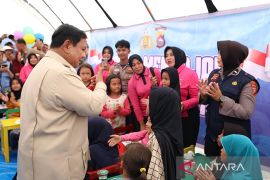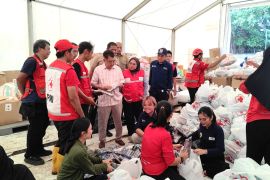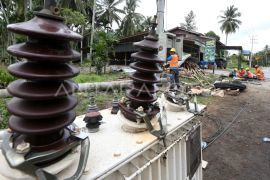Iwans perception is shared by lots of Jakartans, who have been living with the disaster that has again and again come to the most populous city in the country and its outskirts, such as Bekasi, over the years. Big floods that brought about casualties and traffic chaos had even occurred in the capital city in January this year.
The National Disaster Mitigation Agency (BNPB) reported that at least 12 people died of the flooding-related causes and more than 62 thousand locals were displaced. A part from the incessant rain in Greater Jakarta areas, this repeated disaster is closely related to the condition of rivers flowing through the capital city.
The condition of rivers flowing through Jakarta is totally different from that in London, the United Kingdoms capital city whose population is relatively similar to Jakartas. What makes the rivers flow through the two capital cities looks different? The Thames River in London is clean enough and has been used as a means of transportation.
Houses and buildings there use the edge of this 346-kilometre-long river as their front yards. Instead, 13 canals flowing through Indonesias capital city -- Mookervart, Angke, Pesanggrahan, Krukut, Grogol, Baru Barat, Ciliwung, Baru Timur, Cipinang, Sunter, Buaran, Jati Kramat and Cakung -- look dirty as a result of pollution and trash. Unlike the British peoples habits of making river the front yard, the banks of the rivers in Jakarta are always treated as the back yards of houses and buildings. As a result, harmful wastes from houses and offices freely go to the rivers.
The Ciliwung River which flows through the areas of Bogor District, Bogor City, Depok City and Jakarta, for instance, has been polluted with rubbish and other toxic materials.
The efforts to clean the river are made by various parties, such as NGO activists and local people. In June 2013, the Ciliwung Caring Community (KPC) initiated a race to clean up the river's waterway from rubbish.
As a result of the race, participated in by 2,458 people living along the bank of the Ciliwung River, 2,678 big plastic bags with full of organic waste were collected.
According to KPC Coordinator Een Irawan Putra, the amount of plastic bags that the participants from 12 villages in Bogor City collected was higher than that in the previous year.
This reality reveals the rivers real condition, which has partly contributed to repeated floods in Jakarta.
The Jakarta Provincial Government does not keep silent about the condition of the rivers flowing through its administrative areas.
Budi Karya, head of the Technical Unit Management (UPT) for Trash Handling, Water, and City Parks, recently said that 128 rivers, creeks and canals around the capital city should have been cleaned up and free from trash in January 2015.
For this purpose, Budi said a total of 1,200 portable rubbish traps had been set up in the water surface of the targeted rivers.
"For example, some portable traps are put in the Mookevart River. If there has been no more rubbish there, the portable traps will be moved to Angke and other rivers," he said.
Excavators were also used for cleaning the sediment of the downstream and headwaters of the East Flood Canal (KBT) and Manggarai sluice gate, he said.
The Jakarta Government, however, may not be able to clean up all rivers alone because the Ciliwung River, for instance, flows through the cities and towns in West Java and Jakarta Provinces. Therefore, the central government's role is needed.
The question is whether the two pairs of presidential and vice presidential candidates, who have started doing their best to win the hearts and minds of the voters ahead to the presidential election on July 9, do care for environmental preservation in general and the river normalization in Jakarta and its neighboring province in particular? ***3***
(T.R013/B005/f001 )
Reporter: Rahmad Nasution
Editor: Fardah Assegaf
Copyright © ANTARA 2014











